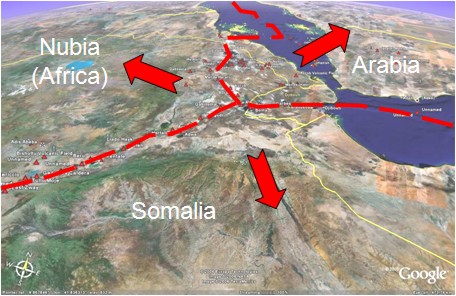
Figure 1: The Afar triple junction. The red arrows show the movement of the African, Arabian and Somalian plates away from the Afar depression.
Geology of the Southern Red Sea and Gulf of Aden
The Red Sea and the Gulf of Aden were formed as the Arabian plate separated from Nubia, as Nubia obliquely collided with the Eurasian plate Figure 1. NE-directed extension between 35-27Ma lead to continental rifting along the line of the Red Sea and Gulf of Aden. Coeval with this, between about 31-29Ma, flood basalts erupted covering some 600,000km2 of the region. Along the margins of the Red Sea these lavas are up to 2000m thick (e.g. Wolfenden et al, 2004). Sea floor spreading in the Gulf of Aden begun about 16Ma and about 4Ma in the Red Sea (e.g. Baker et al 1996).
With the East African Rift System, the Red Sea and the Gulf of Aden form the Afar triple junction. The Red Sea runs roughly straight for 2000km northwards to where it joins the Aqaba-Dead Sea transform rift system. The Gulf of Aden is straight near the triple junction, before curving round to link in the with mid-ocean ridge system in the Indian Ocean Figure 2.

Figure 2: Regional plate tectonic setting. Red arrows show approximate direction of opening of the rift systems.
The mid-ocean ridge system of the Gulf of Aden is composed of normal faults and strike-slip faults with a dominant left lateral element. The northern part of the southern Red Sea is dominated by normal faults striking perpendicular to the direction of extension, whilst in the south there is left lateral strike-slip activity as well as normal faulting (Hofstetter & Beyth, 2003).
